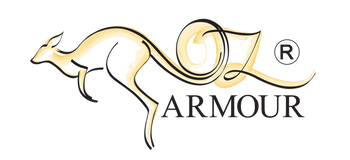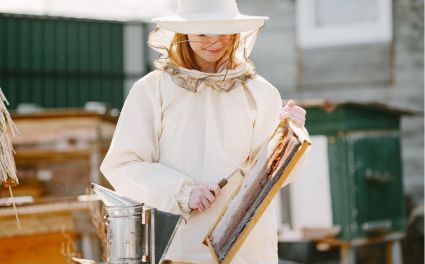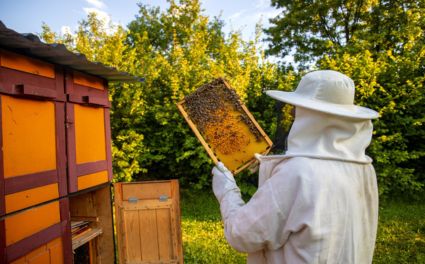Our ecology depends heavily on bees, and beekeeping provides a fulfilling and sustainable approach to protecting these important pollinators while reaping the rewards of honey production. We will lead you through the foundations of beekeeping hives in this guide, from understanding their components to picking the best form of the hive for your requirements.
You'll discover how to set up, maintain, and deal with frequent problems beekeepers encounter. Whether you love the outdoors, want to become a beekeeper, or are just interested in learning more about bees, this book will provide the knowledge you need to start beekeeping confidently.
Understanding Hive Management
To ensure the well-being and productivity of honeybee colonies, hive management is the active maintenance and care of beehives. Regular inspections, illness and pest control, swarm prevention, and the provision of necessities like food and water are just a few of the activities involved.
Hive management aims to increase honey production, foster the overall success of beekeeping operations, and provide bees with the best possible environment to thrive. Both the bees and the beekeeper benefit greatly from effective hive management.
Strong, vigorous colonies are easier to manage and are more resistant to diseases and pests. Additionally, well-managed hives produce more honey, increasing yields and harvest possibilities. Additionally, hive management enables beekeepers to keep an eye on things and deal with potential problems immediately, lowering risks and fostering colony survival.
Several factors influence hive management decisions:
Climate and seasonal variations: Throughout the year, forage availability and weather patterns vary by region, impacting the time and kind of hive management duties.
Colony strength and health: Management procedures, including illness prevention, feeding, and queen evaluation, are all based on the bee colony's state, which includes its population, brood patterns, and general vigor.
Beekeeper goals and objectives: Whether it's honey production, queen rearing, or pollination services, each beekeeper may have various goals. These objectives influence hive management choices, affecting the focus and methods used.
Hive Inspection and Monitoring
To monitor the health and development of their colonies, beekeepers must conduct regular hive inspections. The timing and frequency of inspections vary depending on the season, beekeeping objectives, and hive condition. During the active beekeeping season, inspections are typically performed every 7 to 10 days, with modifications dependent on particular requirements or conditions.
Beekeepers rely on particular instruments and equipment to do thorough hive inspections. A smoker to quiet the bees, a hive tool for disassembling hive parts, a bee brush for gently transporting bees, and safety gear such as a bee suit, gloves, and a veil are a few examples. These devices decrease bee disturbance and protect the beekeeper during inspections.
Beekeepers evaluate the population and strength of the colony while doing hive inspections. This entails counting the bees, analyzing the pattern of the brood, and checking for queen cells or eggs. Assessing colony strength enables beekeepers to ascertain whether the colony is flourishing, spot possible problems, and make wise management choices.
Inspections of the hive provide a chance to spot and address potential problems inside the hive. This involves recognizing symptoms of prevalent problems like varroa mites, Nosema, or foulbrood, and disease and pest identification. Beekeepers also assess the queen's performance, looking for indicators of a healthy, prolific queen or symptoms that may require queen replacement. Beekeepers can examine the health of the comb during inspections, looking for any indications of disease, mold, or faulty construction, as well as ensuring that the hive is clean.
Swarm Prevention and Control
Effective swarm prevention and management depends on an understanding of honeybees' swarm instinct. Swarming is a type of natural reproduction in which a colony splits, with some of the bees, including the old queen departing to start a new colony. When the colony becomes congested or detects a decrease in resources inside the hive, an automatic action takes place.
Beekeepers need to be alert to swarm preparation and swarm warning indications. The appearance of queen cells, an increase in the number of drones, and a crowded hive with wild bees loitering in the front of the hive are some of these warning indicators. Beekeepers can prevent swarming by acting proactively by recognizing these signs.
Techniques for preventing swarms concentrate on regulating the swarm impulse and creating enough space within the hive. As the colony grows, adding new supers or boxes offers bees more space to store honey and reduces congestion. The best space can be maintained, and swarming can be avoided with routine inspections and prompt honey extraction. Beekeepers can also use swarm management techniques to prevent swarming, including removing queen cells or rotating queen excluders.
Swarm control techniques are used when swarm preventive strategies are unsuccessful. The colony is purposefully split into two or more halves, each with a queen, to create an artificial swarm. This technique imitates spontaneous swarming while giving the beekeeper control over the action. Another strategy is to tilt the hive, which will cause the bees to lose their orientation and rearrange their natural hierarchy. Another technique involves splitting hives, dividing the resources and bees from the original colony among a new hive.
Disease and Pest Management
Various diseases and pests may threaten a honeybee colony's health and survival. Varroa mites, Nosema, American foulbrood, and wax moths are typical problems. Particularly dangerous, varroa mites can weaken bees and spread viruses to them. While American foulbrood is a bacterial illness that can cause the colony to die, Nosema is a fungus that affects the digestive tract. Weakened hives are invaded by wax moths, which damage the comb.
Monitoring and early detection are crucial in managing diseases and pests. Beekeepers can spot problems early on by doing routine inspections of hives, which include looking for indications of an infestation or illness symptoms. Varroa mite levels can be determined using monitoring approaches like sugar rolls or alcohol wash.
Depending on the specific problem, different treatments are available for honeybee diseases and pests. It is frequently advised to use integrated pest management (IPM) strategies, which include several techniques such as mechanical controls, cultural practices, and—as a last resort—chemical treatments. Beekeepers may employ natural remedies such as formic acid or essential oils to control Varroa mites. For some bacterial infections, antibiotics may be necessary.
Biosecurity procedures are essential for halting the spread of pathogens and pests. These include washing hands often, sanitizing tools, and avoiding contact with outside sources that can carry infections or pests into the hive. To stop the transmission of illnesses, isolation, and quarantine procedures can also be used when introducing new colonies or equipment.
Feeding and Nutrition
The health and productivity of honeybee colonies depend on monitoring and managing colony nutrition. Beekeepers should frequently assess the food reserves in the hive, particularly during times of low nectar production or environmental stress. Observing honey and pollen stores to ensure they are enough to keep the bees alive is part of evaluating colony nutrition.
Supplemental feeding techniques can aid during food scarcity or nutritional deficits. During hard times, nectar is frequently replaced with sugar syrup, and pollen replacements can supply the protein needed for brood raising. Beekeepers should think about the right feed ratios and time, altering the feeding schedule based on the demands of the colony and outside circumstances.
For honeybee nutrition, pollen diversity and availability are essential. The bees have a balanced diet because a wide variety of pollen sources are available all year. A healthier habitat may result from the maintenance of various feed sources close to the hives and the planting of bee-friendly flowers.
Bees must have access to water sources because they need it to stay hydrated and control the temperature of their hives. Beekeepers can install shallow water containers with floating things like corks or rocks to prevent drowning. Bees are less likely to seek water from less favorable areas if a consistent water source is close to the hive.
Honey Harvesting and Processing
The timing of honey harvesting is crucial to ensure the honey is mature and ready for extraction. Beekeepers often hold off until the bees have capped the honey, a sign that the honey has a low enough moisture content to be stored for a long time.
A honey extractor, a machine that spins frames or combs to extract honey using centrifugal force, is a standard tool used in honey extraction techniques. The extracted honey is ready for processing when it pours down the sides and gathers at the bottom of the extractor.
Filtering and packaging the harvested honey is part of the honey storage and processing process. Filtering ensures a clear and clean final product by removing trash or contaminants. The honey is packaged in jars or other containers with care taken to maintain cleanliness and prevent contamination.
The flavor and purity of honey must be preserved under ideal storage conditions. Honey should be kept in a cool, dry location out of the sun to avoid crystallization and keep its natural qualities.
It's crucial to leave honey for the bees to promote the health and well-being of the colony. In times of scarcity, especially during the winter when fodder is scarce, beekeepers may leave some honey in the hive for the bees to consume.
Seasonal Hive Management
The main goals of spring hive management are to foster colony growth and brood rearing. Beekeepers should ensure the hive has enough room for the expanding colony when the weather heats up and add more supers or frames. During this time, it's also crucial to prevent and cure diseases, such as by monitoring Varroa mites and putting effective control measures in place.
The main hive management activities throughout the summer are honey production and pest control. To accommodate the honey flow and ensure enough bee storage, beekeepers may add supers. Regular pest surveillance, including Varroa mite inspections, supports colony health. During this active season, swarm prevention strategies are essential, including removing queen cells and regulating colony numbers.
A part of managing hives in the fall is preparing the colony for the winter. This involves ensuring enough honey is on hand for the bees to survive the winter. To reduce wintertime mite-related problems, varroa mite control and monitoring are still crucial during this time. The hive's temperature can be controlled, and moisture buildup can be prevented by insulating the hive and providing adequate airflow.
Winter hive management tasks focus on protecting the colony's survival. Insulation aids in retaining heat and lessens heat loss. Examples include wrapping the hive with insulation material or utilizing hive blankets. To avoid condensation and ensure excellent airflow, adequate ventilation is essential. If the colony's honey reserves are low, additional feeding with sugar syrup may be required to keep it alive until the colony has access to springtime forage.
Beekeeping Hives by Oz Armour
The appropriate equipment is essential while beginning your beekeeping career or growing your apiary. To satisfy your beekeeping needs, OZ Armour offers a variety of hives and other necessary supplies.
Why should you purchase hives for beekeeping from us? Firstly, we prioritize quality. Our hives are expertly manufactured and designed to survive the challenges of beekeeping. We utilize long-lasting materials that guarantee longevity and give your bees a secure and cozy environment.
Second, we recognize the significance of beekeeper security. We provide a variety of beekeeping outfits, veils, and safety equipment because of this. Our products are made to offer the highest level of protection while still preserving comfort and movement.
Additionally, we stand out due to our industry knowledge in beekeeping. Our staff comprises seasoned beekeepers who are aware of the particular needs of beekeeping. We are committed to helping beekeepers and giving them the necessary resources to succeed.
You can trust that you are investing in quality beekeeping hives and accessories by choosing OZ Armor. We are committed to your pleasure and to assisting you in building a successful apiary. Explore our selection of beekeeping supplies to get a head start on your endeavor.












